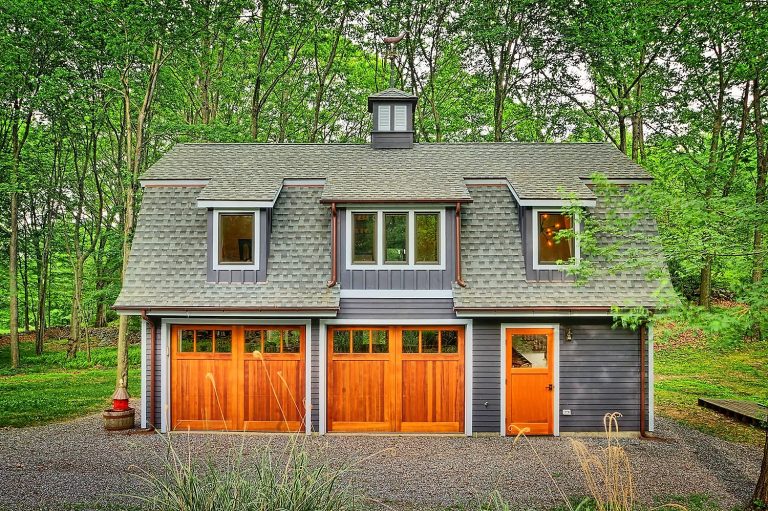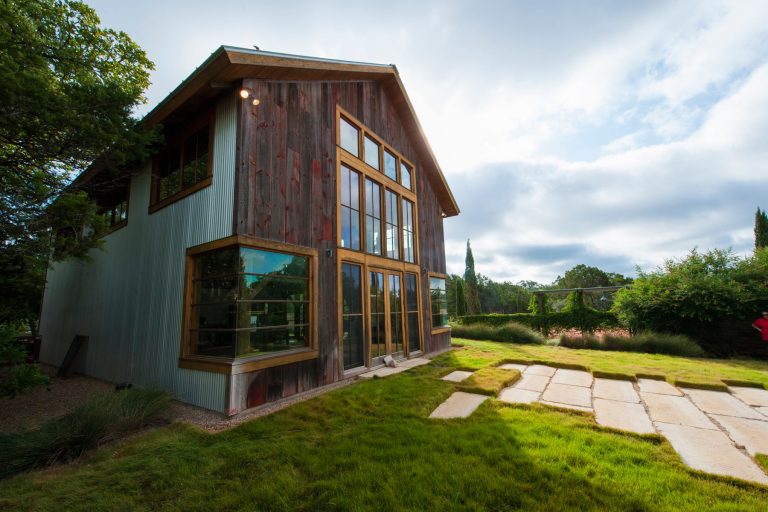
Potentially cheaper and more energy efficient, barndominiums are the real estate trend that’s taking “farmhouse chic” to the next level.
The lack of existing homes and/or affordable housing has led prospective buyers to consider nontraditional ways to purchase a home. For example, there’s been an increase in parents and grandparents helping their offspring buy a home—either to provide a financial boost, or to enter into a multigenerational living arrangement. Other people are paying cash for a home, and entering bidding wars against other buyers. Perhaps the most unexpected trend: People are buying barns, or, in this context, “barndominiums.”
“A barndominium is a type of architectural style in which a barn is converted to a livable space,” explains Tyler Forte, CEO of Freshbuilds, a general contracting company specializing in interior renovations. He adds that barndominiums are typically constructed of corrugated metal sheets with spray foam insulation and a prominent feature of these homes is large, open spaces (think “open concept” to an extreme). In fact, he says, some are even large enough to store an RV.
But is this really a trend? Home and real estate experts say yes. Learn more about barndominiums, why they’re gaining popularity right now, and the pros and cons of buying into the trend.
Why are barndominiums trending?
Vanessa Famulener, president of homes at the real estate technology company HomeLight, says there are multiple reasons why the barndominium trend makes sense. “Interest rates are continuing to rise, causing buyer sentiment to plummet, and the cost and time of building a single-family home is unprecedented.” As a result, she says buyers without cash handy or the ability to outbid the competition are starting to get creative.
In fact, Famulener says, new HomeLight data shows 16 percent of real estate agents surveyed say they’ve seen an increase in buyer interest in barndominiums over the past 12 to 24 months. “Another 16 percent of agents we surveyed say that barndominiums are available in their area,” she says. “Among those agents, the top three features of this housing style include a rural lifestyle (68 percent), a lower cost (52 percent), and less maintenance (36 percent).”
Amanda Gunawan, founding partner of boutique architecture and design firm OWIU, has another idea about why barndominiums are trending. “I think adaptive reuse has grown in popularity because there is now a strong emphasis on sustainability,” she says.
In the spirit of sustainability, Gunawan is a strong believer that older structures can and should be reused—part of the reasoning behind a barn renovation project she’s currently working on in Woodstock, N.Y. “The barn will be transformed into a music retreat dedicated to the exploration and study of sound through nature,” she says. The two-story, 1,200-square-foot building will also house a production studio.

However, the barndominium trend doesn’t only include people who are repurposing existing barns. Some people are also opting to build their own barn-style homes from scratch—and they’re creating them solely to live in.
Leigh Spicher, interior designer and national director of design studios for Ashton Woods, tells us her dad was ahead of the curve, building a house out of a barn when she was growing up. Spicher says it’s only fitting that barndominiums are on the rise. “The ‘interior sister’ of farmhouse style has been with us for a decade, so the simplicity of the exterior and floor plan was bound to join,” she says.
Whether you’re a fiend for farmhouse style or aren’t so sure about the barn-inspired look, below are the benefits and drawbacks of buying or building a barndominium.
Pros of a barndominium
One of the most obvious benefits to this style of house is plenty of open space. “If you are tired of boundaries and labels on space, then this is the quintessential style,” Spicher says. She notes that open-space concepts can help to create a feeling of inclusiveness and shared life experiences. “A wide-open floor plan could be a dream to create, because you can divide space with soft furnishings—like a large sofa or dining table—without cutting off the energy with a wall.” She also recommends building a loft style second story to separate the sleeping space.
If your home design style leans farmhouse chic, then that’s an added benefit. “If you love the rawness of wood floors, or even concrete, balanced with large windows, this may be the style for you,” Spicher says. “This style often blends that of farmhouse interiors with a more industrial finish.”
If you’re considering building rather than buying, barndominiums can also be a more affordable option, due to the less expensive materials and often shorter build time. According to HomeAdvisor, a barndominium typically costs $94 to $120 per square foot—depending on the finishes you choose and the cost of labor in your area—while building a traditional house usually costs$100 to $200 per square foot.
Barndominiums can also be less expensive to own over time, thanks to lower maintenance costs.
“Traditional homes are built with wood, asphalt on the roofs, and wood siding or other porous material,” Mark Mestaz, realtor at Keller Williams Realty in Bakersfield, Calif., says. But since barndominiums are constructed of mostly metal, he says they’re not subject to weathering like a conventional build.
This can also increase the safety of a barndominium versus a traditional home. “The structure is built with steel beams and cross sections creating full rigidity,” he says. Conventional homes, on the other hand, are more flexible, and Mestaz says they can deform or come apart with settling or seismic activity.
Jason Gelios, a realtor at Community Choice Realty in Detroit, adds that the metal roof and siding can also make barndominiums more energy-efficient. “In summer months, you can expect it to be easier to cool the barndominium,” he says. This is thanks to the heightened ceilings and open floor plan, he explains, adding that the design “provides a more energy-efficient living space because you don’t have to push air into farther rooms or around corners.”
You can also save on electricity costs by turning off your lights during the day. According to Gunawan, the high volume and tall ceilings let more natural light pour in.
Cons of a barndominium
There are also several drawbacks to this style of home, some of which are the same as the pros, simply viewed from another perspective. For example, Spicher considers the open layout to be a strong advantage, but admits that after the pandemic lockdowns, some people may have grown tired of family inclusiveness, and prefer to have boundaries and private space. “While we love a good open floor plan, barndominiums might be lacking privacy and even some security,” she says.
Another pro that can turn into a con: While a barndominium is designed to last longer, Mestaz warns that there’s a risk of corrosion. “Though the construction is durable and practically immune to fires, the property will require ongoing treatment and weatherization to ensure the elements do not rot the structure,” he says.
Plus, while those high ceilings make it easier to cool the living space in warmer months, Gelios admits that it could be a challenge to heat the home in the winter—and your heating bills could be larger than if you were in a traditional home.
Financing may also be a concern. “While it’s fairly simple to locate financing for a traditional home, it’s more of a challenge to finance a barndominium-style home,” Gelios says. Even if you find a lender, he warns there will likely be stricter guidelines, and you may need a larger down payment.
A lender may not be the only person that’s hard to secure. You may also struggle to find a buyer if you ever decide to move. Mestaz warns that not everyone likes this style of home, so expect your pool of buyers to be much smaller.
And finally, Gunawan points to the love it-or-hate it factor: “The exterior structure is very easily distinguishable by shape, and people often associate that shape immediately with a barn,” she says. So, even though you’re calling it a barndominium, which has a rather trendy sound to it, be prepared for friends and family members to say you live in a barn.
Terri Williams, Real Simple

